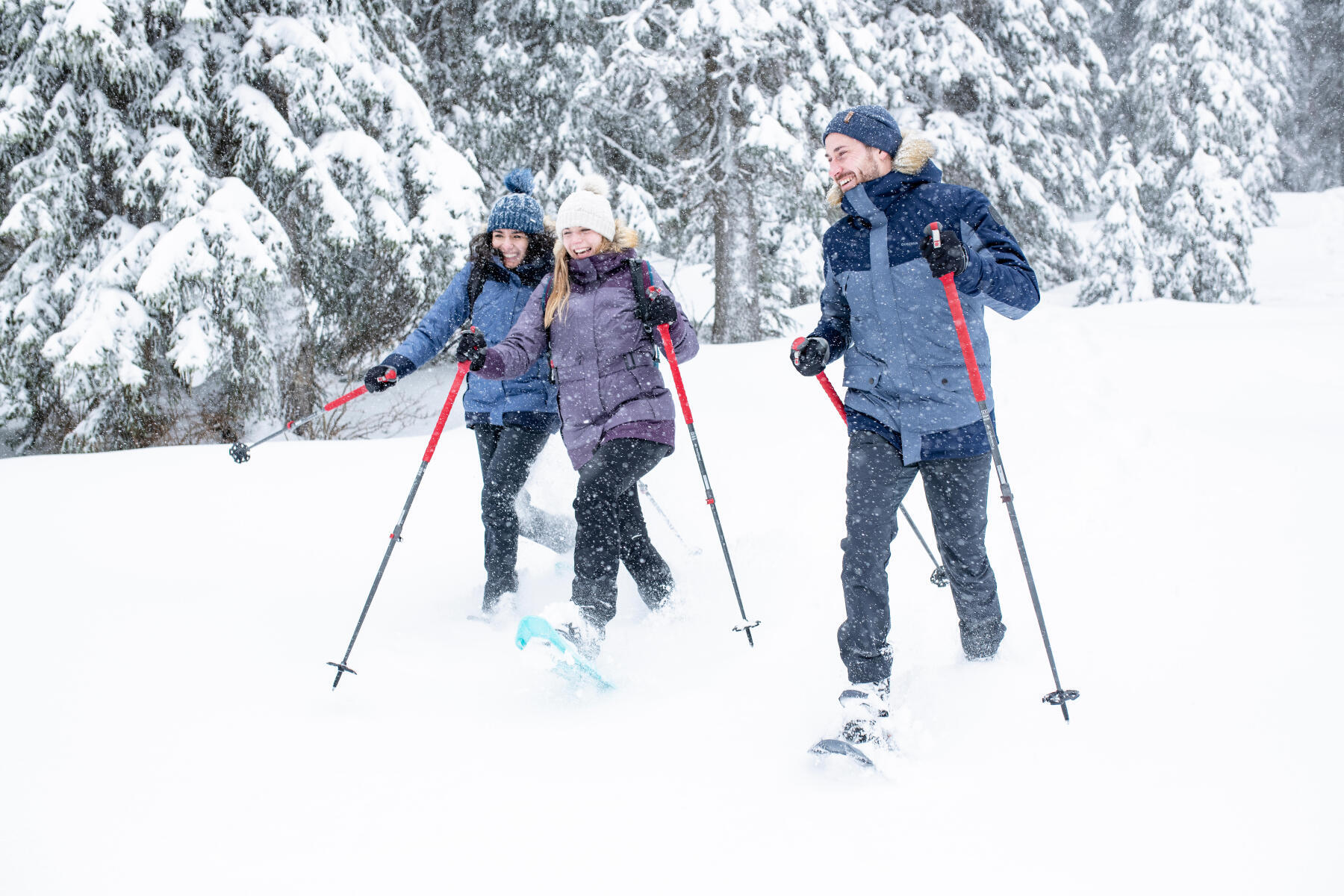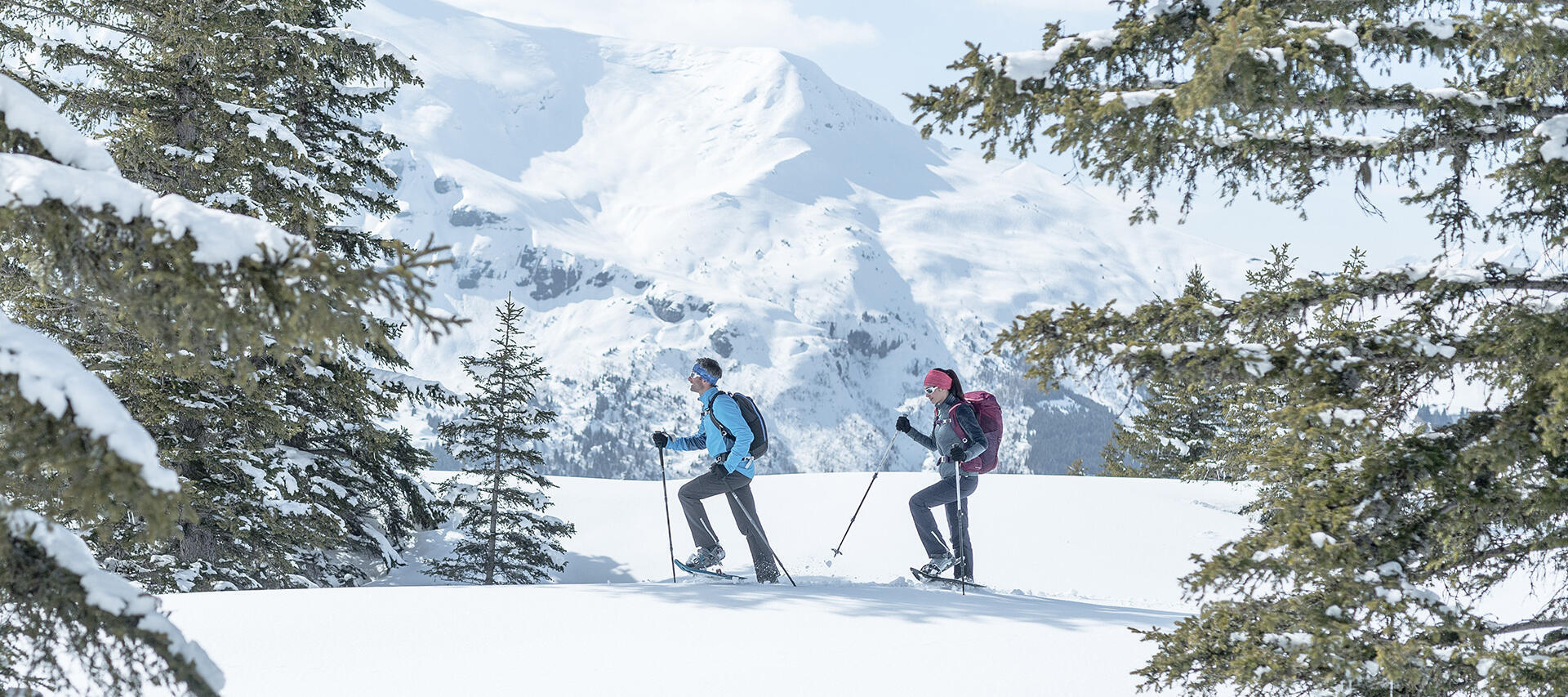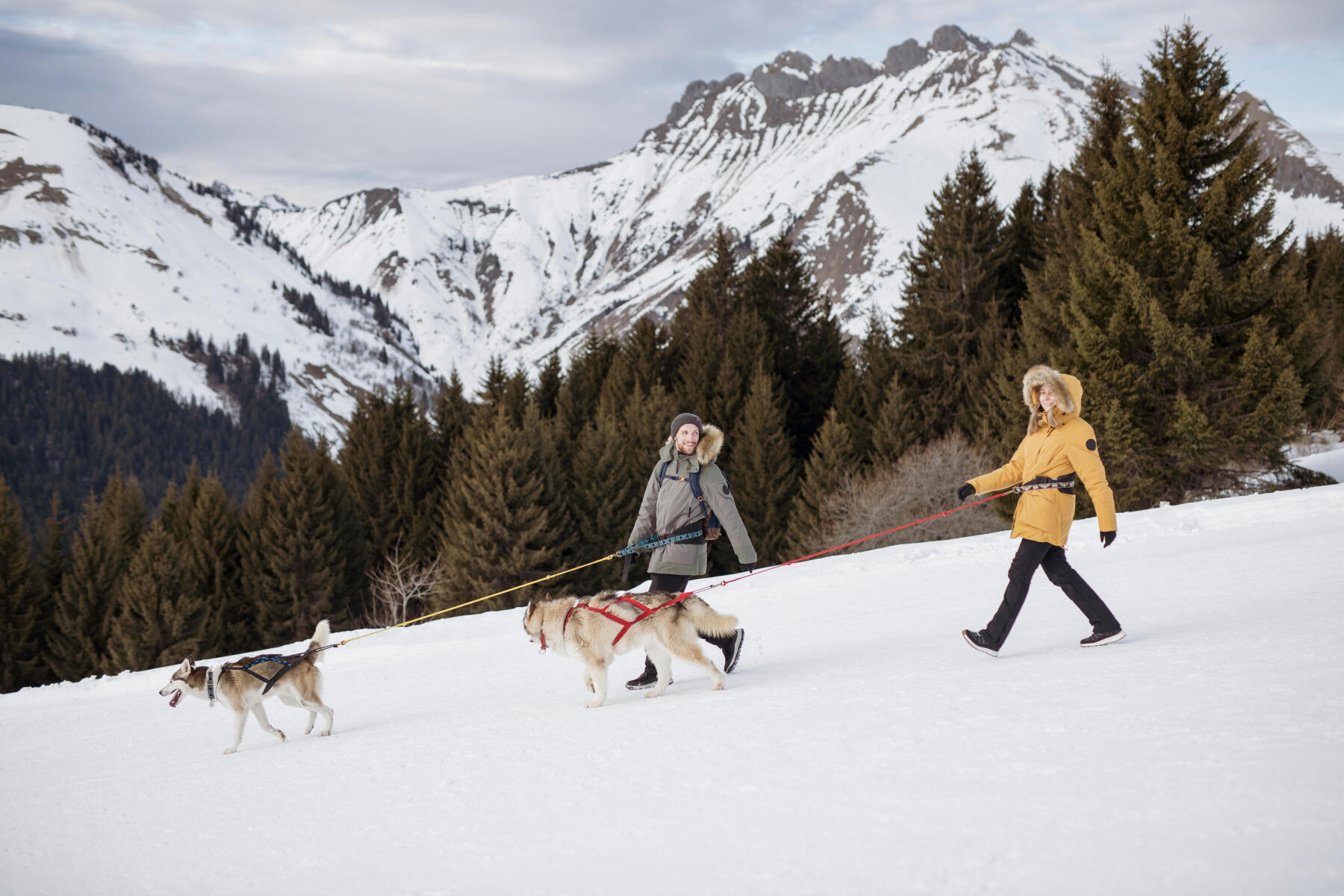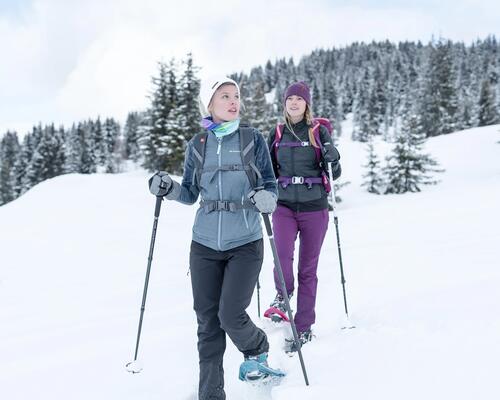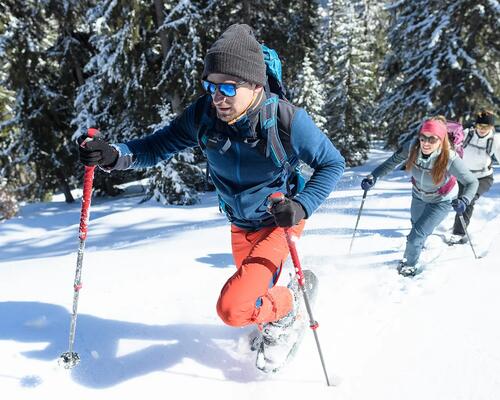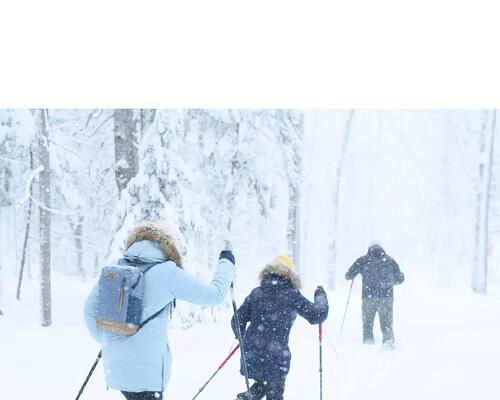What equipment do you need to enjoy a hassle-free hike?
For a worry-free hiking expedition, you need some very special equipment. First of all, get yourself an ergonomic hiking backpack which will allow you to transport all your equipment without breaking your back. And don't forget to pack a topographic map, compass and even a GPS.
In addition, when choosing your winter, hiking itinerary, check how long the walk is. As you know, the days in winter are much shorter. Your hikes should finish around 4pm so you don't end up hiking in the dark. And if you want to play it safe, a head torch
is an essential accessory.To warm you up, remember to take a few hand and foot warmers to slip into your gloves, socks or pockets. As a precautionary measure, you should pack a traditional first aid kit at the bottom of your bag: a survival blanket, sun cream with appropriate UV protection, a water bottle or warm thermos flask to keep you hydrated, snacks such as dried fruit as well as spare clothing including a pair of gloves, socks and other spare items, just in case. And, of course, a first aid kit.
And remember to charge your phone and GPS, take a portable battery if necessary and keep this equipment nice and warm inside your jacket to prevent thermal shock.
If you want to explore more technical paths, bear in mind that hiking in snow often requires safety equipment (ARVA avalanche transceiver, probe and sensor) although the most important thing is knowing how to use it.
Finally, when snow freezes, poles can be extremely useful.

